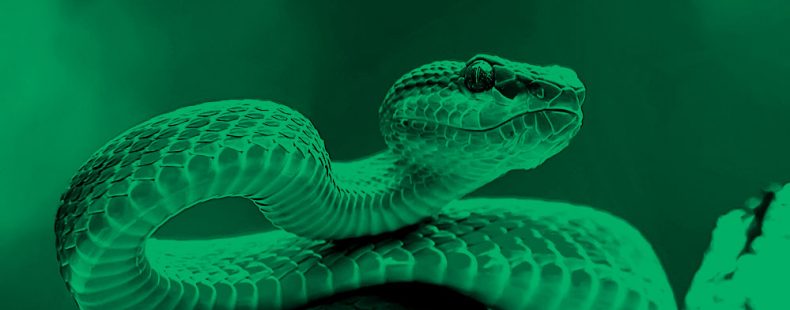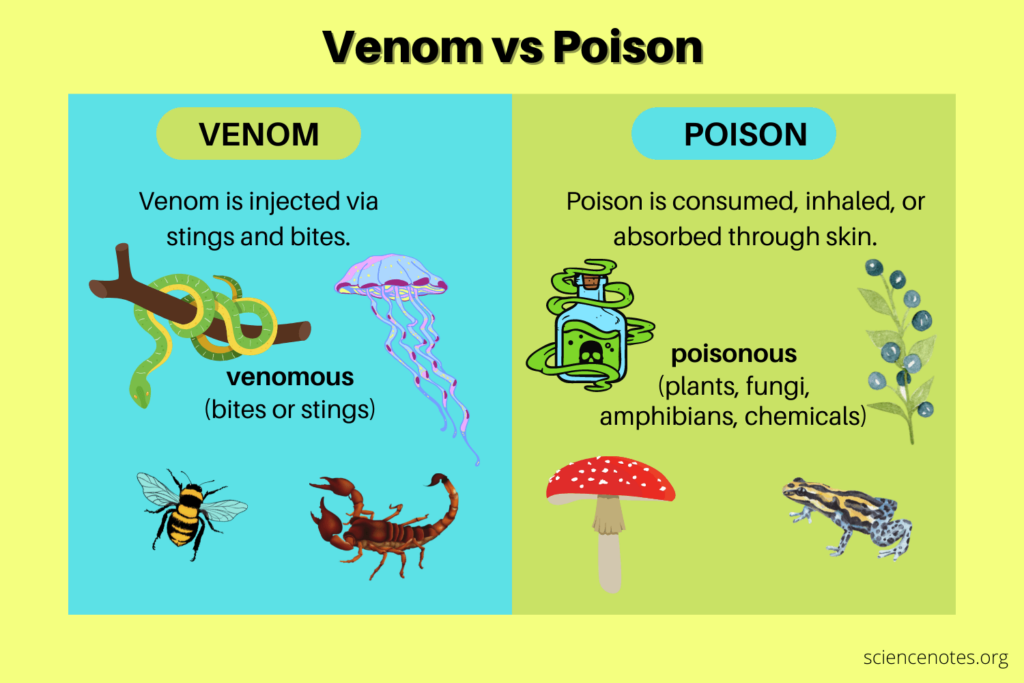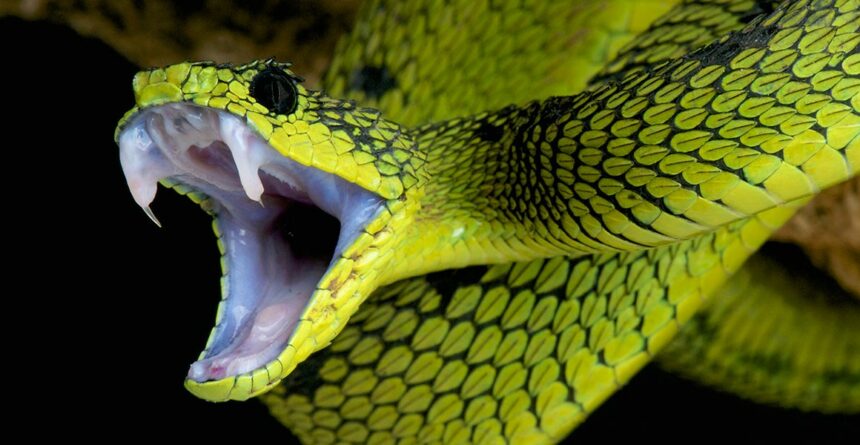There’s a popular saying that goes, “If it bites you and you die, it’s venomous, and if you bite it and you die, it’s poisonous.” While this encapsulates the basic idea, let’s delve into the specifics of each term.

What is venom?
Venomous animals inject their toxins into their prey or victims. This can occur through the stinger of an insect or the fangs of venomous snakes, such as the black mamba (Dendroaspis polylepis) or the king cobra (Ophiophagus hannah). Considered one of the most venomous species globally, the box jellyfish possesses tentacles armed with tiny darts known as nematocysts, which can be deadly to humans. Sea creatures like the blue-ringed octopus (genus Hapalochlaena) are also venomous and often attract the curiosity of tourists due to their unique appearance.
One of the most well-known venomous mammals is the distinctive-looking platypus (Ornithorhynchus anatinus). Male platypuses have a spur on the inside of their lower leg that can inflict intense pain on humans when it pierces the skin. Importantly, the venom must enter the bloodstream through a wound, typically left by a bite or sting.

What is poison?
Many substances can be classified as poisons, but they only affect you when you physically ingest the toxin they contain. Poison can be swallowed, inhaled, or even absorbed through the skin.
In the case of snakes, the garter snake has a relatively harmless bite if it strikes you. However, if you were to consume this snake, you might be in trouble because it is actually poisonous due to its diet of newts and salamanders, which produce toxins stored in the snake’s body.
The beloved poison dart frogs (genus Dendrobatidae), known for their vibrant appearance, store their toxins on their skin. These frogs are considered poisonous rather than venomous because even a slight lick from a human can be fatal.
On a molecular level, there are distinctions as well. Dr. Ronald Jenner, a venom evolution expert at the Natural History Museum in London, notes that “poison has very small chemical molecules that can easily pass through your skin, whereas the molecules of venom are too large to be absorbed, so they must be injected.”

A combination of both
Certain animals like to be a little extra and are both poisonous and venomous. Some snake species are venomous in the traditional sense but also become poisonous due to their diet, such as the red-necked keelback snake (Rhabdophis subminiatus).
Don’t forget plants and fungi
Plants and mushrooms can also fall into the categories of venomous or poisonous. The stinging nettle, for instance, is technically venomous as it uses stingers to inject toxins but can be consumed safely. Conversely, numerous fungal species are poisonous and can be lethal when ingested, underscoring the importance of consulting a mushroom expert before consuming them.








